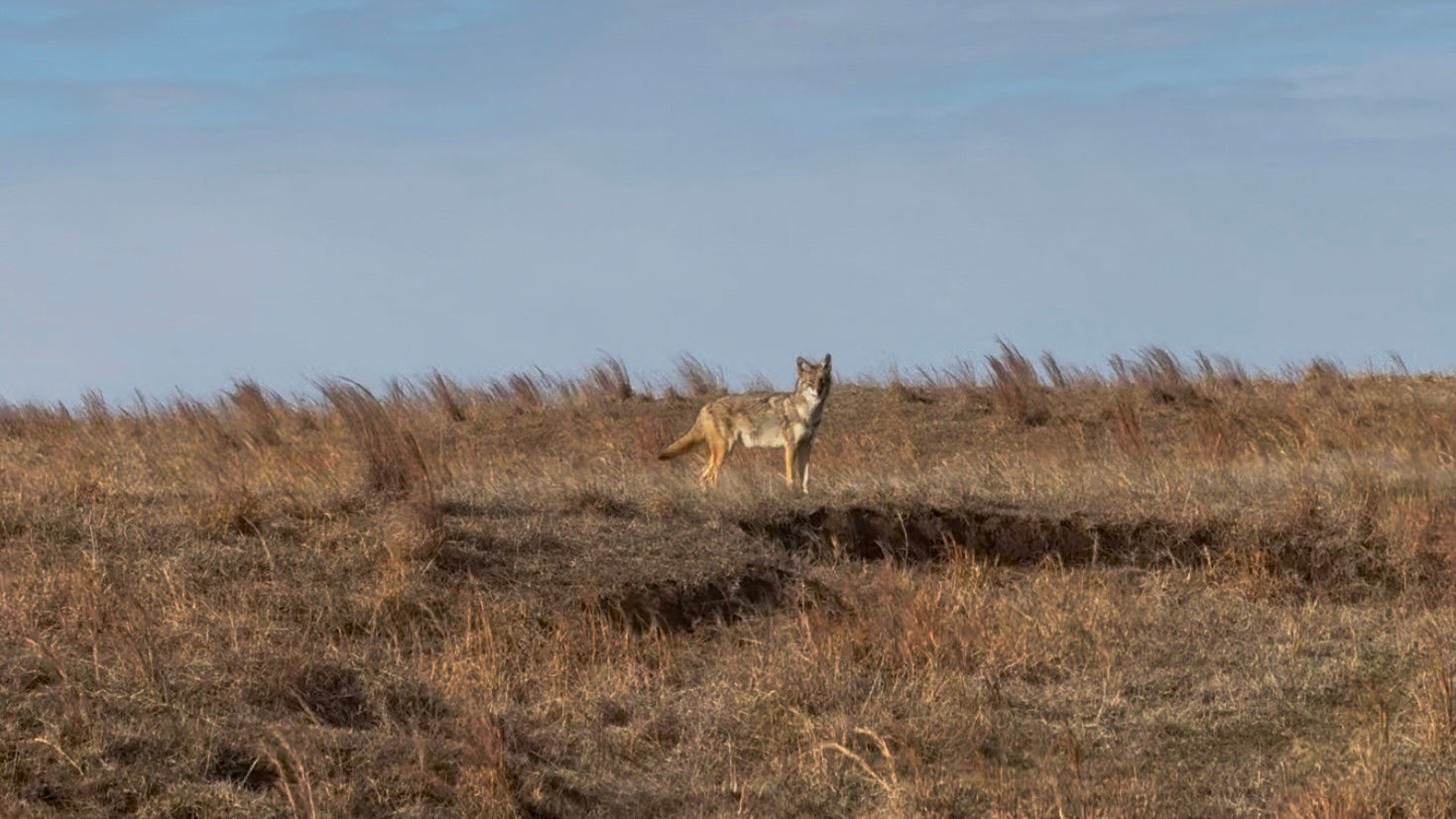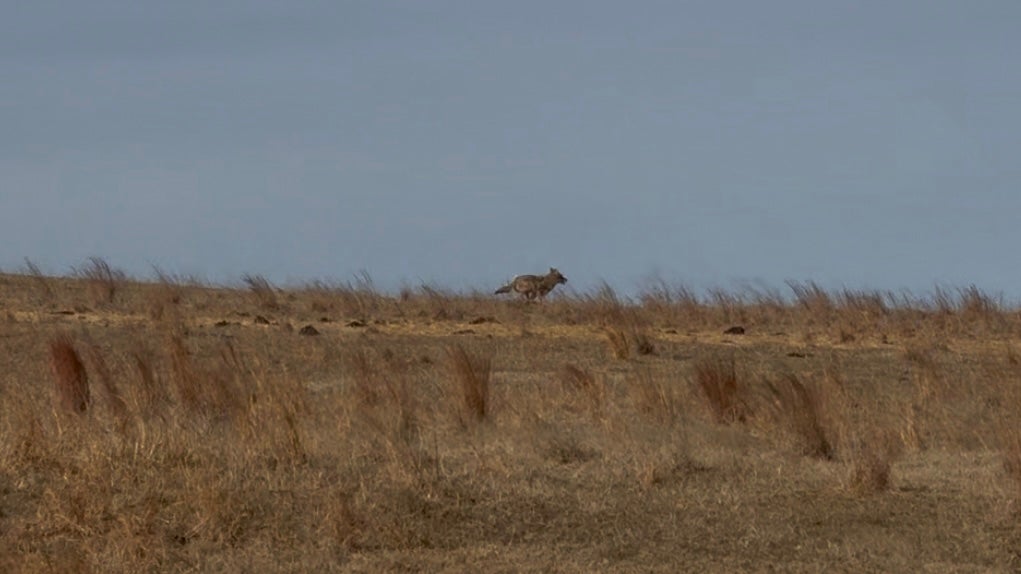Coyotes are a problem for farmers, ranchers, hunters, and the average person because their numbers have exponentially grown in recent decades. Many experts believe the population is as high as 4.7 million, making coyote population control necessary for everyone. However, controlling the coyote population isn’t an easy matter (some argue it’s impossible). Coyotes are intelligent and incredibly adaptable, requiring a thorough plan to control the local population effectively. As you continue reading, you’ll learn why everyone, not just farmers, ranchers, and hunters, should take coyote population control seriously and how you can control the number of yotes on your land.
Why Coyote Population Control Is Important for Everyone
Coyotes are carnivorous predators and scavengers who seek the easiest meals. They often encounter humans and human activities, which can devastate livestock, pets, and local wildlife.
Farmers/Ranchers
Farmers and ranchers understand the problems coyotes cause daily. Some people would argue that livestock losses are minuscule in the grand scheme of things, which statistically appears true. However, most farmers and ranchers are not giant corporations making millions of dollars in profit, so losing a single animal to coyote predation is not only heartbreaking but threatens their livelihood.
I live in the country surrounded by cattle ranchers, and I’ve never met a rancher or farmer who considered the loss of a calf, lamb, or chicken to coyotes to be minuscule.
Hunters & Conservationists
As a hunter, it doesn’t take much to convince me that coyotes can be a problem. However, they’re not as much of a threat to deer populations as we once thought. Yes, they will occasionally take out a fawn, but deer populations are near the highest they’ve ever been, so losing a few fawns a year isn’t going to hurt your deer population (but it might end the genes of your trophy buck). Coyotes rarely attack a full-grown deer, so once they reach maturity, coyotes are much less of a threat.
One of the biggest threats that coyotes pose is to turkeys. I’ve seen the devastation left behind after a hen tried defending her nest from a punk of the prairie, and there wasn’t much left but some cracked shells and a lot of feathers.
As hunters and conservationists, we know that managing coyote numbers will help small game and fowl (especially those that nest on the ground) become more abundant because reducing the number of top predators will make small game animals more likely to survive.
Average Person
Even those who don’t farm, ranch, or hunt can still negatively encounter coyotes. Since coyotes are adaptive to nearly all environments, and suburbs often have few natural predators but abundant prey (small pets, garbage, and pet food), coyotes thrive close to the average person.
So, for people who don’t hunt, farm, or ranch, lowering the local coyote population will positively impact the area by reducing the number of pets lost to predation.
How to Control the Coyote Population on Your Property

The methods most often used to manage coyotes are trapping, hunting, and shoot-on-sight. Each has advantages and disadvantages, but all are necessary to manage your property successfully.
Trapping
Trapping coyotes is a popular method for several reasons, but it’s not the golden ticket to controlling yote populations.
Pros
- Don’t have to be on location constantly
- Can cover multiple locations on your property
- Non-lethal (for people who dislike killing and areas where hunting is prohibited)
Cons
- Trapping requires lots of skill and an understanding of coyote behavior
- Coyotes quickly grow wearing of trap sites
- Yotes can escape traps
Hunting
One of the things I love about coyote hunting is how little gear you need for a successful hunt, or you can dive in head first and purchase lots of gear. Hunting coyotes effectively lowers the number of yotes on your property; however, it has some significant drawbacks.
Pros
- Hunting is fun
- There are multiple ways to hunt them (dogs and calling are the most popular)
- You can get a reasonable estimate of how many coyotes are present
- They won’t get away (unless you’re a poor shot)
Cons
- Must be on location
- Time-consuming
- Coyotes are smart and not easy to hunt
Shoot-On-Sight
Shoot-on-sight is essentially the easiest method, but I don’t consider it true hunting because you’re not actively trying to harvest a coyote. This is what most of the ranchers and farmers do in my area. They carry a rifle in their truck or side-by-side and shoot the coyotes they randomly see.
Pros
- You’re not dedicating countless hours to hunting and can get other jobs done around the farm.
- No need for any fancy coyote hunting gear.
Cons
- You only shoot a coyote when you randomly see it, which might not be very often.
- Only works in the countryside/where you can legally shoot a firearm (not within city limits)
Why Coyote Population Control Doesn’t Always Work

As much as I wish crafting the perfect coyote population control plan would drastically lower the number of yotes running around, it doesn’t always work for a few reasons.
Coyote Immigration
One thing we often forget about is how migratory these creatures are daily, weekly, and monthly. Yes, coyotes typically have a home range and territory, but that doesn’t mean they don’t roam and search for new territories.
Oftentimes, when you harvest a coyote, there are a few others ready and willing to move in on that yotes area, so while you might have temporarily lowered the population, it doesn’t help you out in the long term.
Prey Density
Prey density is linked to coyote migration patterns. If there is a lot of prey in an area, more coyotes will be drawn to it, and the area can support a greater number.
In our conservation efforts, we’re often looking to raise the number of prey in an area, which will draw more predators to that area, so it’s a never-ending cycle.
Coyote Birthing Rates
How many coyote pups survive is also greatly dependent on prey density. If the pack has lots of food and is healthy, the pups are more likely to survive, creating a higher population. When you kill a coyote, it lowers the predator-to-prey ratio, which will allow more pups to survive, replenishing the one you just killed.
Managers Cannot Keep Up
Much like the wild hog epidemic, we cannot keep up with all these factors and effectively control the coyote population in every area. Farmers and ranchers lack the resources needed to manage the population as they wish. Hunters and the average person also lack the time and resources required for proper management. In most cases, government conservation agencies will not concern themselves with coyote management (they have many other more important initiatives).
However, I don’t believe giving up and letting the coyote population do as it will is the answer. I still think hunters and conservationists should be striving to lower the population in every ethical way.
Parting Shots: Coyote Population Control
As a conservationist and hunter, I believe we must do everything in our power to help keep coyote numbers in check to protect livestock, wildlife, and pets. Coyote population control doesn’t just affect hunters and ranchers; it affects us all.
The post Why Coyote Population Control Is Vital – Managing Coyotes Effectively appeared first on AllOutdoor.com.


